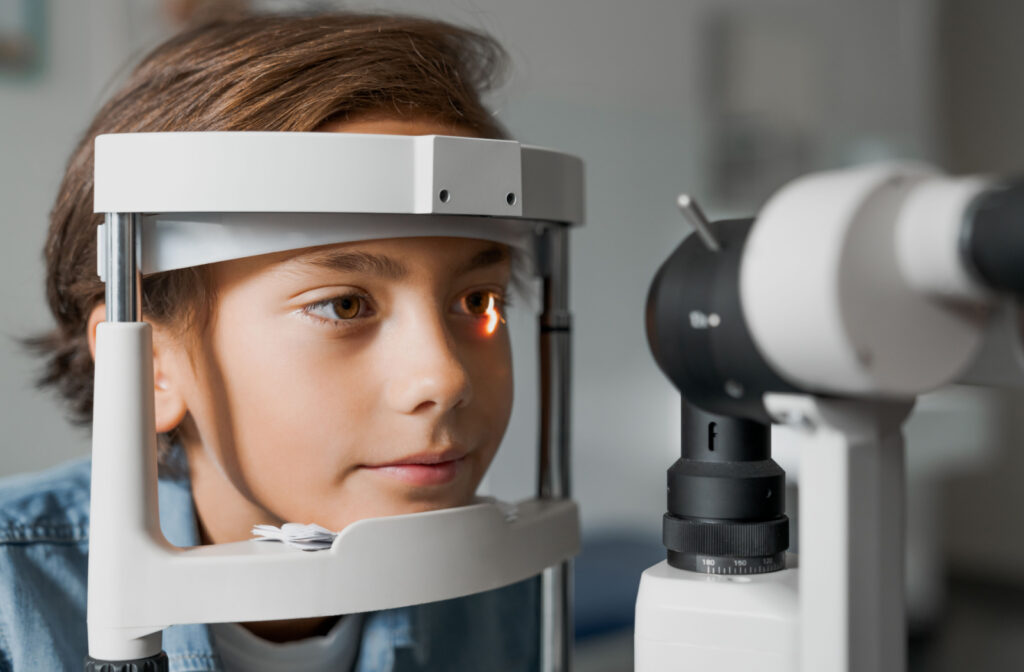All Categories
Featured
Table of Contents

Regular eye assessments are essential for keeping great vision and detecting possible eye health problems early. Nonetheless, the frequency of these tests can differ substantially based on an individual's age, way of living, and total wellness. Comprehending the advised timetable for eye examinations can aid guarantee that individuals of all ages get proper care and surveillance for their eye health and wellness.
Infants and Toddlers (0-2 Years)
For toddlers and infants, eye exams are critical for finding any kind of prospective vision troubles at an early stage. The American Academy of Ophthalmology suggests that a youngster's first eye exam should happen at around six months of age. Throughout this preliminary visit, the eye treatment specialist will certainly examine the child's aesthetic development and check for any type of noticeable eye concerns.Following this very first examination, it is recommended that youngsters have another eye exam at age three. This check out will concentrate on assessing the child's overall aesthetic function, including eye placement and the capability to track items. If no issues are discovered, the next test should be scheduled prior to the youngster begins school, typically around age 5 or 6.
School-Aged Youngsters (6-18 Years)
Once youngsters get to institution age, regular eye exams must be arranged each to 2 years. Vision is vital for learning and growth, and lots of colleges carry out vision testings. These screenings do not change a comprehensive eye exam by an eye treatment specialist.For kids included in sports or tasks needing considerable visual emphasis, annual eye exams may be advisable. Furthermore, if a child displays indications of vision troubles-- such as trouble reviewing, squinting, or regular migraines-- a browse through to the eye medical professional must be arranged as quickly as feasible.
Young Adults (19-39 Years)
Young person usually have less vision modifications than older age, however normal eye exams remain important. The basic referral is to set up an eye exam every 2 years during this duration. Nonetheless, individuals with certain threat factors-- such as a household history of eye condition, diabetic issues, or those that put on get in touch with lenses-- need to think about yearly eye tests.In addition, those that spend significant time on electronic devices may experience electronic eye stress. If signs and symptoms such as dry skin, exhaustion, or blurred vision take place, it may be a good idea to see an eye care specialist sooner.
Grownups (40-64 Years)
As people get in midlife, the probability of creating vision issues rises. Grownups aged 40 to 64 ought to arrange eye exams every one to two years. This age might begin to experience presbyopia, a natural age-related condition that makes it challenging to focus on close items. Eye examinations can likewise assist detect various other usual age-related conditions such as glaucoma, cataracts, and macular deterioration.If people in this age have threat elements like high blood pressure or diabetes mellitus, they might require even more regular assessments to check their eye health and wellness very closely.
Elders (65 Years and Older)
For elders, normal eye tests end up being even much more important. The American Optometric Association suggests that individuals aged 65 and older have an eye test at least annually. Older grownups go to a greater threat for numerous eye illness, consisting of cataracts, glaucoma, and age-related macular degeneration. Early detection and treatment of these problems can avoid vision loss and enhance the high quality of life.Verdict.
Recognizing the proper routine for eye exams based on age is vital for preserving optimum eye health throughout life. By adhering to these guidelines and seeking advice from with an eye treatment specialist, people can take proactive steps towards protecting their vision and general wellness.Table of Contents
Latest Posts
Effective Strategies for Setting Up Regular Maintenance and Emergency Situation Fixings for Your Automobile
Published Nov 23, 24
0 min read
Resources Available for Sufferers Looking For Info on Eye Wellness and Health
Published Nov 23, 24
0 min read
Upgrade Your Property with Stylish Iron Fencing from Montana Fence
Published Nov 23, 24
1 min read
More
Latest Posts
Effective Strategies for Setting Up Regular Maintenance and Emergency Situation Fixings for Your Automobile
Published Nov 23, 24
0 min read
Resources Available for Sufferers Looking For Info on Eye Wellness and Health
Published Nov 23, 24
0 min read
Upgrade Your Property with Stylish Iron Fencing from Montana Fence
Published Nov 23, 24
1 min read